Every digital camera has a White Balance or Automatic White Balance (AWB) setting in the camera menu. But how many of us actually use it or even know what it is for? Fortunately, most manufacturers have the Automatic White Balance pre-set in their cameras when they are shipped out. So most consumers are using it even if they are not aware of it.
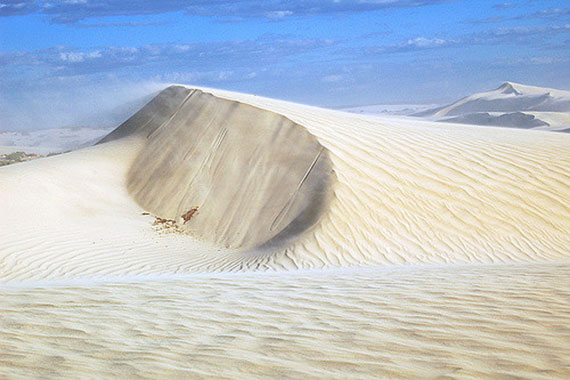
Photo by Sek Keung Lo; f/11.0, 1/400-second exposure.
What is the purpose of White Balance?
Sometimes when we take a picture, the overall color tint of the image might be yellowish, blueish, or something in between. In any case, that overcast tint was not visible when the picture was taken and many times it can ruin a very good image.
The purpose of white balance is to eliminate the discoloration in an image due to certain colors in the scene having more intensity and/or a higher or lower “temperature”.
Thats right…colors in a scene have temperatures. Blue light has a high color temperature and red light has a low color temperature. Don’t look at these temperatures as hot or cold as in when we touch something. Rather, look at it as a measurement of the intensity of the light. The intensity of the light is measured by what is called the Kelvin scale. See the examples below.
Source of Light Color Temperature
- Tungsten/Incandescent Light 2.500-3,000 K (Kelvin)
- Clear Day (Mid day outside) 5,000-6,500 K
- Shade or Heavily overcast day 9,000-10,000 K
These are very approximately values. As you can see, a tungsten light (regular light bulb) has a pretty cool color temperature. Its color temperature is closer to the red side of the color spectrum. If you take a picture with a lightbulb as the only light source, the image will have a slight orange /yellowish tint. (a red tint would be the extreme but the lightbulb temperature is not that cool). On the other hand a picture taken in the shade or on an overcast day might have a slightly bluish tint since the much higher temperature is closer to the other side of the color spectrum.
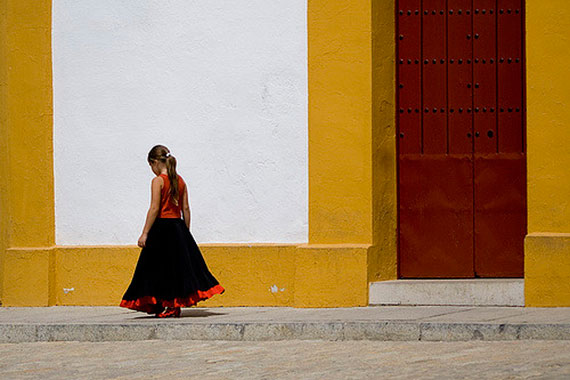
Photo by Riccardo Romano; f/4.0, 1/3200-second exposure.
What does temperature have to do with White Balance?
When the camera shutter is pressed, the camera looks for something white in the scene to use as a point of reference. Even if the other colors in the scene are dominating the white, the balance function will try to adjust that white in the scene to the same degree of white that we see it with our eyes. The remaining colors in the scene are then adjusted proportionate to the white. The result should be a pretty neutral tone image with all colors showing as they should.
Automatic white balance works pretty good the majority of time. However, there might be times when it might still produce an image with coloring that is off. An example would be a scene that lacks any white color so there is no point of reference.
Most cameras have white balance setings that can be changed to fit a particular scene. Try using your camera’s built in settings such as fluorescent, cloudy, daylight, or whatever might fit the scene you are about to shoot. These settings may vary from camera to camera, but hopefully you will find a setting that will work for you.
Some cameras will allow you to manually pre set your white balance to suit your needs. Take a look at the tutorial on my website about White Balance for a tip on using a white sheet of paper or neutral gray card to pre-set your white balance.
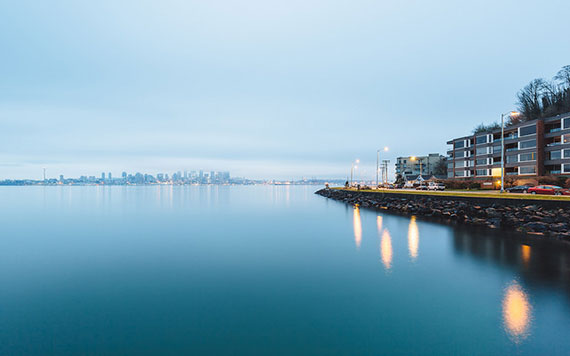
Photo by John Westrock; ISO 100, f/13.0, 114-second exposure.
In closing, lets say you just want to shoot without having to worry about white balance. If your camera allows you to take images in the raw mode, just use that mode. It is very likely you will have the wrong tint in some of the images, but you can adjust the color later using an image correction application like Photoshop.
So now you know what White Balance is all about.
About the Author:
Keith Jones writes for http://easybasicphotography.com. A site geared towards beginners through serious amateurs who want to learn a little more about basic digital photography.
Like This Article?
Don't Miss The Next One!
Join over 100,000 photographers of all experience levels who receive our free photography tips and articles to stay current:



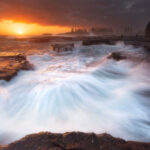
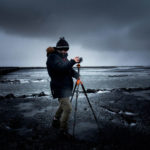

A number of points raised by commenters:
Warm/ cool – I agree that subjectively red is warmer than blue, but technically red is a lower K value than blue.
If you work in broadcast TV, studios were always lit with tungsten lights. So cameras were aligned for a colour temperature of 3200°K (If I remember right) by pointing them at a greyscale chart and adjusting RGB for equal value. Digital camera you press Preset WB button.
The problem came if cameras had to include daylight in a shot. You either switched to 5-7°K or used coloured gel to cover lights or windows to disguise the difference.
I would have liked the article to include interior shots as that is where many colour balance problems occur.
Wow! You feature an article published more than 4 years ago WITHOUT correcting errors!
The author tells readers to think of color temperature as “intensity” but that is simply wrong, Wrong, WRONG!!! Color temperature refers to the spectral content of the light, not intensity.
Please don’t accept and disseminate articles without proofing them.
JF
Why do you always nag me to subscribe when I already subscribe?
I’m kind of new to my DSLR camera and not even sure about how to set the White Balance, but I’ve seen several articles about doing this and always wondered if that has to be set each time you use the camera or will it stay on the last time you set it. Does it just go to default each time you turn on the camera?
Author states a light bulb has a “cool” temperature which produces a red to yellow cast. This is “warm”, not cool. Cool light is on the blue end of the spectrum
You got your message across to your followers … Clear and to the point…that’s what counts. Thank you…
Great article about a subject many photographers (especially those who shoot JPEG) need to master. As noted, not so important if you shoot RAW, but even so, if you get it right in camera, it saves time in post. My question/comment is this: “Why does it seem that almost every photographer who writes for this website either falls to proof their text, or simply does not write good English?” The grammatical errors present in almost every article that gets published here are very distracting, and just downright detract from what is usually very valuable content. Perhaps the publisher can help!
its very ntrstng,we could learn more pls
Good information again. Thanks.
White balance is something I tend to overlook until the auto white balance mode gets it wrong. I am looking forward to experimenting with this this weekend!